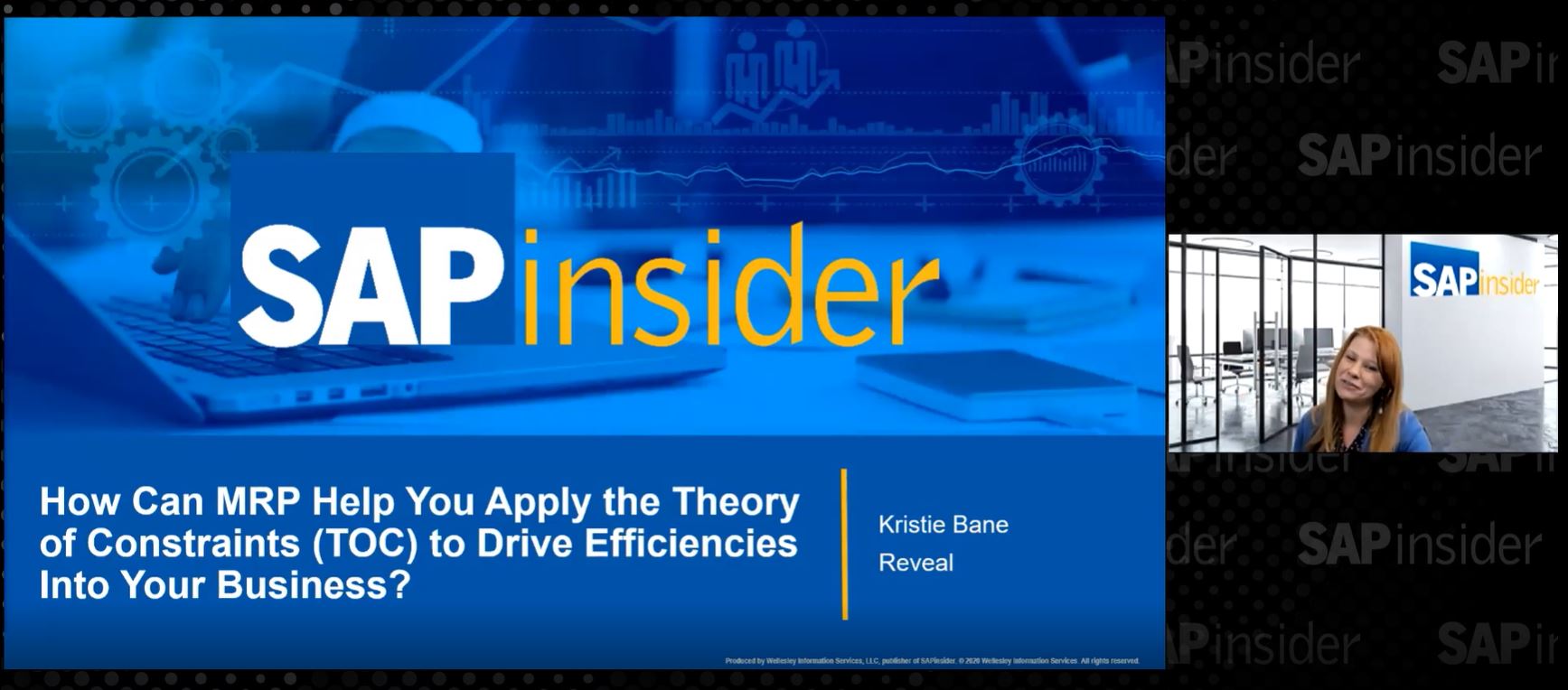Learn How Campbell’s Soup Saved $53 Million in Supply Chain Management
How material planners can leverage standard SAP technology to achieve stability and improve their inventory turnover ratio
More than a quarter of all SAP’s supply chain customers (27%) acknowledge that the current state of their data and business processes prevents them from moving forward with and extracting value from supply chain management (SCM) technologies. By standardizing global supply chain processes and eliminating data silos, these customers can reduce volatility, increase stability, and drive operational key performance indicators (KPIs).
At the SAPinsider SCM event in Orlando last week, Reveal USA and the Campbell Soup Company co-presented a session on how the two companies worked together to achieve exactly this and save $40 million in one year within Campbell’s SCM operations.
This research brief shares how standard SAP technology can lead to similar massive savings in other SAP customers’ supply chains.
Customers Without Harmonized Data Struggle
Without harmonized data — which means having high-quality, master, and operational data synchronized across systems — companies struggle to get an accurate and real-time view into their inventory performance, lot sizes, and dead stock. If they cannot get accurate views of this data, they end up spending much more to manage unnecessary dead stock, and they limit their order promising and fulfillment capabilities.
The Campbell Soup Company faced this exact problem. The organization had a group of nine people processing and managing 81,000 purchase orders (POs) annually. As each effective manager of this group vacated the position, the successive manager had less experience and instructions on how to work with the material requirements planning (MRP) functionality of SAP ERP.
Ngan Lam, now Senior Manager of Supply Chain Planning Capabilities and Analytics, shared, “The person who originally implemented the functionality got promoted and left a user manual. The next guy figured it out and got promoted and left the cliff notes. The next guy moved on and left sticky notes. When his replacement left and I was hired, I got a pat on the back and a ‘Good luck!’”
No one had ever fully optimized the material requirements planning, and due to lack of knowledge and inconsistent use of the functionality, the company was challenged to view the correct inventory levels. This situation led to high levels of manual intervention, a high volume of exception in the planning process, and high levels of dead stock to make up for the lack of visibility.
“We didn’t even know how to access the dashboards that showed the dead stock,” said Lam.
Customers with Harmonized Data Reduce Costs
Customers need to consolidate their SCM data in their enterprise resource planning (ERP) systems and harmonize that data across systems. SAPinsider research shows that companies that have taken these steps have seen reduced costs. In fact, 64% of organizations with harmonized data have seen reduced supply chain costs with their SCM and planning solutions versus 42% of all others.
In the case of The Campbell Soup Company, the business did not try to implement any new applications but instead hired SAP partner Reveal to help harmonize its data and increase the knowledge level of the entire team to maximize the value of the MRP functionality.
Reveal helped Campbell’s standardize and optimize its inventory management processes for all materials and manufacturing plants with an emphasis on cost-effective materials management through an understanding of the MRP capabilities of SAP ERP in use. Reveal also helped Campbell’s restructure the balance of power between the operational end users and the IT department to give the end users ownership of their own processes with support from IT. Utilizing the Reveal ongoing VALUE optimization® (oVo) methodology, Campbell’s established clear ownership of the master data at the user and manager level to help empower the teams to optimize their materials and drive real tangible improvements.
As a result, the material planning team at Campbell’s gained improved and accurate visibility into the company’s inventory. With this information and the newly standardized processes, the team reduced the number of exceptions, reduced the average inventory stock value by 39%, and increased the inventory turns by 38%.
“Campbell’s senior management gave us the ‘You Make a Difference’ award,” said Lam. “But that was nothing compared to seeing how we saved the company $40 million in the first year and $53 million overall since we started this project.”
What Does This Mean for SAPinsiders?
Based on our research and the presentation from Reveal and The Campbell Soup Company, the following considerations can help SAP customers reduce SCM operational costs:
- Before investing in new SCM solutions, ensure you have your existing data in order. Campbell’s did not buy a new product. What the company did, with the help of Reveal, added up to using standard SAP ERP functionality for MRP the way SAP intended. SAP customers without harmonized data might find a temporary fix with a new system, but without the accurate foundational data and knowledge of how to use the solution, the processes will quickly devolve.
- Standardize and optimize processes and educate new employees on how and why the organization manages and plans the way it does. Optimization never comes to an end. Companies should revisit and continually optimize processes with an eye on research to continually learn new best practices. To do this, they need to understand how and why the current systems work the way they do.
- Ensure that end users own their own processes, not IT. SCM consists of business processes supported by IT solutions, and organizations should manage it that way. Operational teams should always take the lead in managing their solutions with the support of IT.
- Stay vigilant in data and process management. Harmonized SCM data only stays harmonized if the people managing it stick to the appropriate policies and processes. When the standardization and optimization project ends, the end users hold responsibility for maintaining the data and their processes and continually optimizing them.
Following this strategic guidance should help SAP customers get the most out of operational data in a way that leverages standard MRP functionality to reduce costs, improve performance, and accelerate growth.
Make sure to download and read the our full report, “Transforming the Intelligent Supply chain,” available for free for SAP customers and the general population. Also, please contribute to the upcoming report, “When to Move Supply Chain Planning to the Cloud” by filling out our latest survey.





